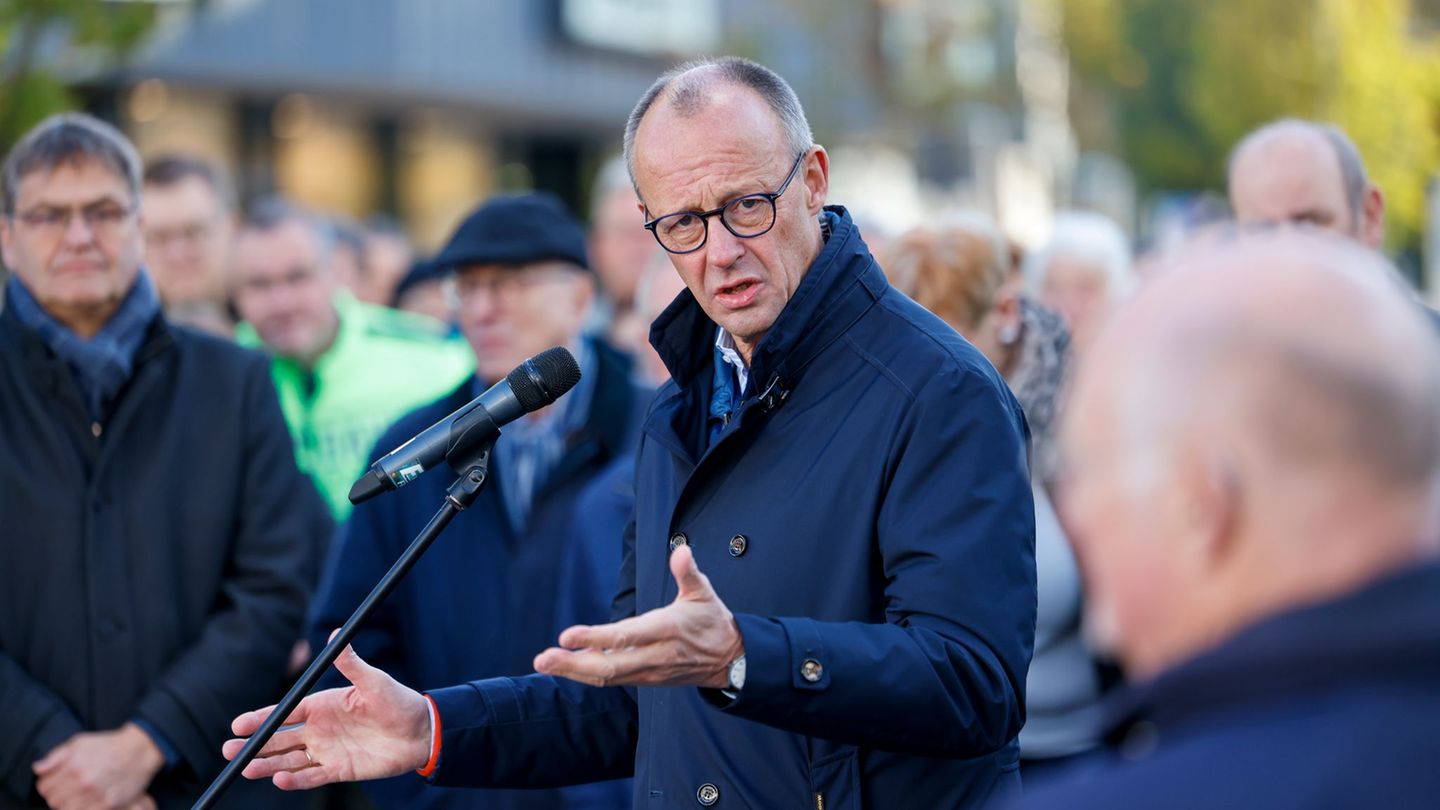Large areas of southern Ukraine are already under water and the situation is getting worse. The destruction of the Kachowka Dam could also change the situation on the battlefield.
A few days after the catastrophic destruction of the Kakhovka dam in the Ukrainian war zone, President Volodymyr Zelenskyy traveled to the flooded region. In the southern Kherson region, he got an idea of the ongoing mass evacuation and met local residents, rescue workers and soldiers.
According to Russian authorities, there are said to be several dead and dozens injured. According to the Ukrainian account, the flood area is already 600 square kilometers in size – and huge masses of water continue to pour unhindered over the country from the reservoir behind the shattered dam.
Zelenskyj published a video on his official Telegram channel that shows houses of which only the top of the roof protrudes from the meter-high floods. For days, the Ukrainians have been warning of the high number of casualties on the occupied southern side of the Dnipro River, which is roughly the front line in this area.
They accuse the Russians of not paying enough attention to the evacuation of civilians and of torpedoing Ukrainian rescue attempts. Selenskyj accused the United Nations and the Red Cross of not providing aid quickly enough in the disaster area.
Most occupied by Russians
According to Ukrainian information, a good two-thirds of the flooded area is Russian-occupied territory. The chief of occupation of the particularly affected city of Nowa Kakhovka, Vladimir Leontyev, spoke on Russian state television on Thursday morning of five dead and more than 40 injured. These numbers could not be verified independently.
The dam in Nowa Kachowka was destroyed on Tuesday night. Like many international experts, Ukraine blames Russia for the disaster. The government of the attacked country is convinced that Moscow had the dam blown up in order to hinder the planned Ukrainian counter-offensive. Moscow rejects this and blames Kiev. Experts also believe it is possible that the dam, which Russia has long controlled, was poorly maintained and burst under the pressure of the water masses.
Russian positions destroyed by floodwaters
The General Staff in Kiev assumes that the Russian troops lost fighters, equipment and military technology as a result of the destruction of the dam. There are dead, injured and missing soldiers. Experts from the US Institute for War Studies (ISW) also found that Russian defense positions on the front line had been destroyed by the torrential waters from the reservoir.
Russian military bloggers believe that Ukrainian troops can now penetrate the occupied territory more easily in order to recapture the region and then the annexed Black Sea peninsula of Crimea. Ukraine rejects this as propaganda by the Russian “terrorists”.
The International Atomic Energy Agency (IAEA) and the nuclear companies in Russia and Ukraine have asserted that there is no immediate danger for the Zaporizhia nuclear plant, which is located at the northern end of the reservoir. However, according to IAEA boss Rafael Grossi, the cooling water reserves will be replenished as quickly as possible in order to be prepared if soon no more water can be pumped out of the reservoir due to the falling water level. With full catchment basins, the water for cooling the six reactors is sufficient for a few months. The reactors are shut down, but need cooling water. Grossi is now planning a site visit, and the IAEA team in Zaporizhia is also to be strengthened.
Nuclear power plant threatened with lack of cooling water
The water level in the lake had dropped by one meter within 24 hours and was 13.05 meters as of Thursday morning (7:00 a.m. CEST), said the state hydroelectric power plant operator Ukrhydroenergo in Kiev. If the level drops below 12.7 meters, water can no longer be pumped to the Zaporizhia power plant, Grossi said. The dam collapse also has devastating consequences for the environment and agriculture in the region.
Turkish President Recep Tayyip Erdogan proposed a commission of inquiry into the dam disaster in telephone calls with Kremlin chief Vladimir Putin and French President Emmanuel Macron. Macron pledged quick support to Ukraine and promised an aid convoy with essential items, including portable tanks, water treatment equipment and hygiene items. The Federal Agency for Technical Relief (THW) sent eight trucks with supplies such as drinking water filters and power generators to Ukraine.
Source: Stern
I have been working in the news industry for over 6 years, first as a reporter and now as an editor. I have covered politics extensively, and my work has appeared in major newspapers and online news outlets around the world. In addition to my writing, I also contribute regularly to 24 Hours World.




